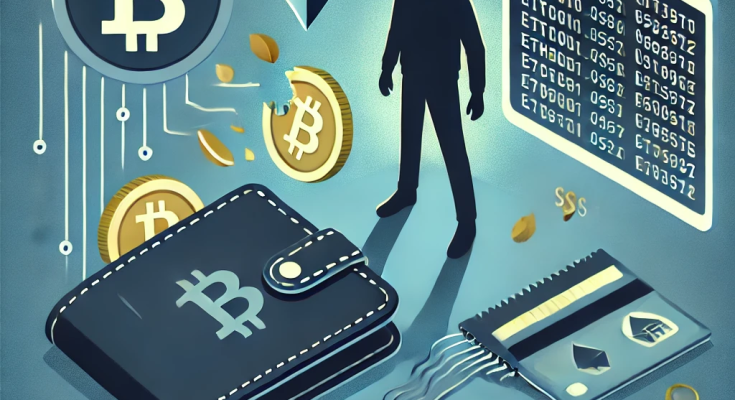Introduction
The cryptocurrency industry witnessed a significant rise in cyberattacks in 2024, with hackers stealing over $2.2 billion—a 21% increase from the previous year.
Despite advancements in blockchain security and regulatory oversight, cybercriminals continue to exploit smart contract vulnerabilities, centralized exchange weaknesses, and phishing attacks to steal funds from unsuspecting users and institutions.
In this article, we’ll explore the biggest crypto hacks of 2024, how hackers are executing these attacks, and what investors can do to protect their assets.
1. The Biggest Crypto Hacks of 2024
2024 saw several high-profile hacks that shook the crypto industry, exposing major security flaws in decentralized finance (DeFi) platforms, centralized exchanges, and private key management systems.
A. The Largest Crypto Heist: $500 Million Stolen from a Centralized Exchange
🔹 A major global crypto exchange suffered an exploit due to compromised private keys.
🔹 Hackers gained unauthorized access to hot wallets, draining multiple assets, including Bitcoin (BTC), Ethereum (ETH), and stablecoins.
🔹 The exchange halted withdrawals for weeks, causing panic among users.
💡 Example: This hack echoed the infamous Mt. Gox and FTX collapses, raising concerns about exchange security practices.
B. DeFi Protocol Breaches: $700 Million Lost in Smart Contract Exploits
Smart contract vulnerabilities remain a prime target for hackers, with DeFi platforms losing over $700 million in 2024.
🔹 Flash loan attacks manipulated liquidity pools, draining millions from DeFi protocols.
🔹 Oracle manipulation exploits allowed hackers to artificially inflate token prices before dumping them.
🔹 Reentrancy attacks—a method used in the famous DAO hack of 2016—continued to plague smart contracts.
💡 Example: A major DeFi platform lost $150 million overnight due to a flash loan exploit, forcing developers to shut down lending services.
C. NFT & Wallet Exploits: Phishing Attacks on the Rise
🚨 NFT collectors and wallet users were heavily targeted in phishing scams.
🚨 Fake airdrops and malicious links tricked users into signing malicious transactions.
🚨 Over 50,000 wallets were drained through phishing campaigns impersonating major crypto projects.
💡 Example: A hacker group used fake OpenSea listings to steal millions in high-value NFTs, selling them on alternative marketplaces.
2. How Hackers Are Executing These Attacks
Cybercriminals are using increasingly sophisticated techniques to compromise wallets, smart contracts, and crypto platforms.
A. Private Key Compromise & Exchange Hacks
📉 Hackers target centralized exchanges storing billions in crypto.
🔑 Weak security practices, such as inadequate multi-signature protection, make exchanges vulnerable.
📧 Social engineering attacks trick employees into revealing sensitive credentials.
💡 Solution: Users should avoid storing large funds on centralized exchanges and use hardware wallets instead.
B. Smart Contract Exploits in DeFi
🔹 Unverified code and rushed audits leave DeFi protocols vulnerable.
🔹 Attackers exploit bugs in smart contracts to drain liquidity pools.
🔹 Malicious governance proposals allow hackers to take control of entire projects.
💡 Solution: Investors should use battle-tested DeFi platforms with extensive audits and avoid unverified projects.
C. Phishing & Social Engineering Attacks
🔹 Fake website clones trick users into entering private keys.
🔹 Discord and Telegram scams impersonate trusted crypto projects.
🔹 Compromised browser extensions steal seed phrases from wallets.
💡 Solution: Users should always verify URLs, use hardware wallets for transactions, and enable two-factor authentication (2FA).
3. What Can Investors Do to Protect Their Crypto Assets?
As hacking threats increase, investors must take proactive security measures to safeguard their funds.
A. Use Cold Wallets for Long-Term Storage
✅ Store crypto in hardware wallets (Ledger, Trezor) instead of exchange wallets.
✅ Use multi-signature wallets for extra security on high-value transactions.
✅ Regularly back up and store seed phrases securely offline.
B. Verify Transactions & Avoid Suspicious Links
🚨 Double-check smart contract approvals before signing transactions.
🚨 Only interact with official websites and avoid clicking on unknown links.
🚨 Use browser extensions like MetaMask to set spending limits on DeFi transactions.
C. Choose Secure Exchanges & DeFi Protocols
🔹 Opt for exchanges with strong security practices (cold storage, insurance funds, 2FA).
🔹 Use DeFi platforms with verified smart contract audits and a proven track record.
🔹 Enable withdrawal whitelisting and withdrawal delay features for added security.
4. The Future of Crypto Security: What’s Next?
🔮 AI-Powered Fraud Detection – Machine learning will help detect suspicious activity before funds are compromised.
🔮 Multi-Party Computation (MPC) Wallets – New wallet technology will eliminate the need for single-point-of-failure private keys.
🔮 Stronger DeFi Security Standards – More rigorous smart contract audits and governance frameworks will reduce vulnerabilities.
🔮 Insurance for Crypto Hacks – New blockchain-based insurance models will cover losses from security breaches.
💡 Example: Companies like Nexus Mutual and Unslashed Finance are launching DeFi insurance policies to protect investors from smart contract failures.
Crypto hacks are increasing, with over $2.2 billion stolen in 2024, highlighting the urgent need for stronger security measures in the industry.
Key Takeaways:
✔️ Centralized exchanges and DeFi platforms remain major targets for cybercriminals.
✔️ Smart contract vulnerabilities, phishing scams, and private key compromises are the most common attack vectors.
✔️ Investors should use cold wallets, enable 2FA, and verify all transactions carefully.
✔️ The future of crypto security will involve AI-powered fraud detection, MPC wallets, and blockchain-based insurance.
As the crypto industry continues to evolve, staying informed and implementing strong security practices is the best defense against hacks and scams.



